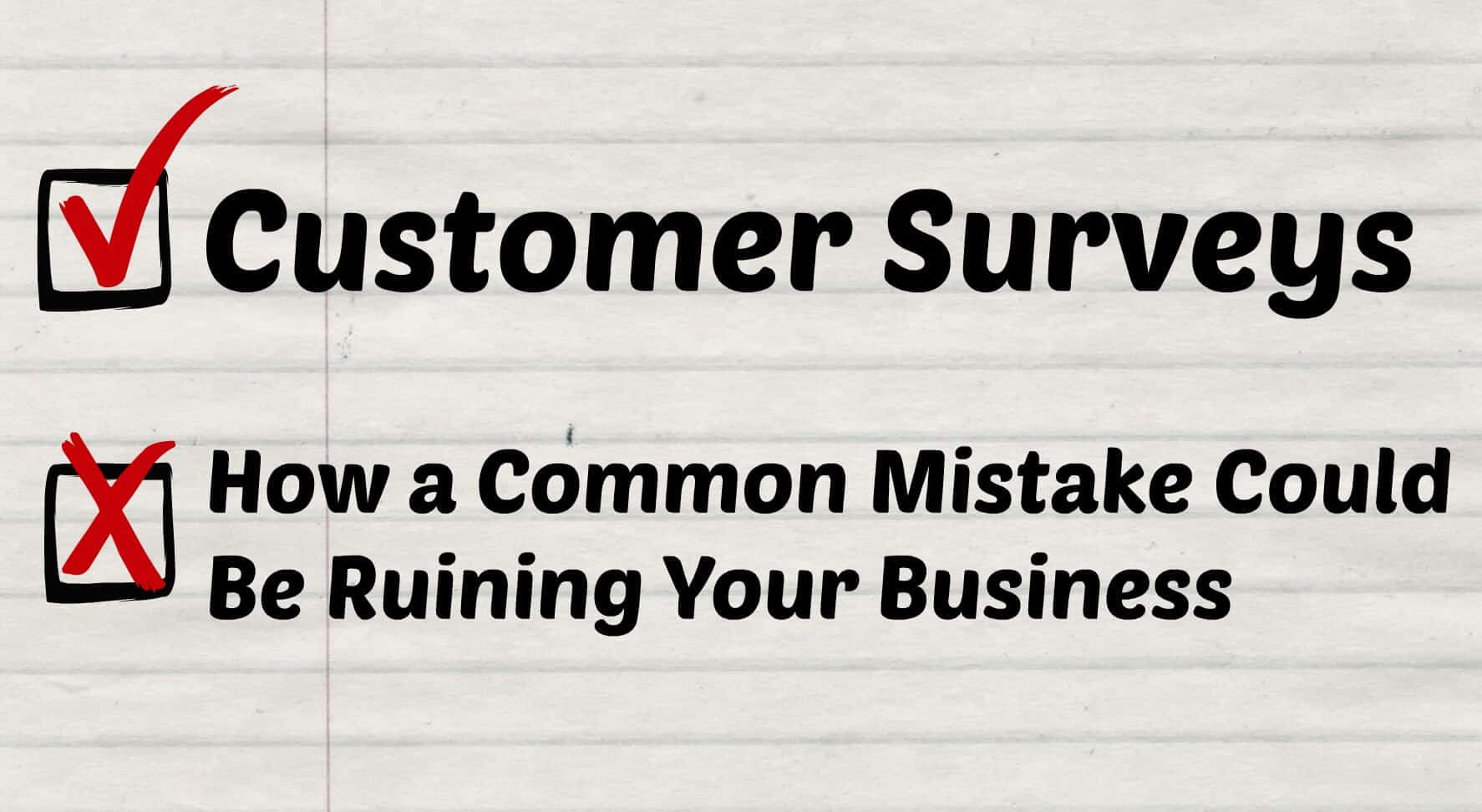A few weeks ago, I noticed a request to complete a survey at the bottom of my Chick-Fil-A receipt. Normally, I ignore these, but completing this survey would get me a free chicken sandwich, so I complied. (I’m part Scottish and married to a Jew; I love free.)
Filling out this survey was eye-opening in one particular respect. I was asked to rate my experience on a scale: from “Highly Dissatisfied” to “Highly Satisfied.” Because the service, food, and price were exactly what I expected them to be, most of my answers were “Satisfied.” I got my order quickly. The cost wasn’t outrageous. The quality of my food was the same level of deliciousness it always is. All in all, it was a good meal.
So imagine my surprise when I was asked to explain why I hadn’t been “Highly Satisfied” with my experience. Yep, Chick-Fil-A was not “satisfied” with a customer who was merely “satisfied.”
And this isn’t the only company who treats customer surveys this way. Friends of mine who work at Walgreens say it’s the same thing there. Although the company asks customers to rate them on a scale of 1-9, only 9’s count as positive results for the store. A rating of “8” is exactly the same as a rating of “1.”
The Non-Existent Scale
The idea behind this is admirable. Nothing less than absolute perfection is acceptable. But there is another viewpoint that’s being ignored, and it’s the viewpoint that should be first and foremost in every business owner’s mind: the customer’s.
Seeing a variety of possible answers looks—to the customer—as if they’re being given a plethora of different options. These kinds of surveys appear to present the customer with a variety of different options, but in reality they are only presenting two: perfection or failure.
The problem is that the customer doesn’t always know that the business is only happy with 9’s and above. They’re simply doing as they’re told, rating the store using the scale they’ve been given. Average visits get a “satisfied” or a “5” (on a scale of 1-10). But the customer’s version of an “average” visit might tick all of the boxes on the company’s definition of “absolute perfection.” Loyal customers are especially prone to this, as they are likely to be lulled into complacency with consistent red-carpet service (they’ve come to expect it, so it will no longer blow their socks off).
The Failure/Perfection scale can make you think you’re doing worse than you really are. So how do you combat this? By changing how you interpret the data.
Say Hello, and Let's Get To Work Together
Interpreting Customer Surveys
If you’ve been thinking about implementing customer surveys at your business, you should first think long and hard about how you’re going to interpret the data. Choosing to be satisfied only with a perfect score is like trying to find the end of the rainbow.
So, how should you examine your survey results?
Keep It In Perspective
First, understand that everybody has a different perspective. One person might never give a “perfect” score, because there is always room for improvement. Another person might choose the most positive answer for things that barely met their expectations. Certain Grumpy Guses will never be happy with anything.
You can combat this “perspective problem” by providing specific answers to choose from (“Will definitely come back” rather than “1-9,” for example), but keep in mind that there will still be some level of disconnect.
Listen Up!
A good way to level the playing field a bit is to provide a comments section for customers to explain the reasoning behind their answers, but it’s important to factor these comments into your survey results. I’ve been told that Walgreens doesn’t do this, and looks only at the number score to determine a store’s level of customer satisfaction. (Which begs the question: why bother letting the customer provide a comment at all?)
Clarifying comments are the next best thing to getting inside the customer’s head and figuring out where they’re coming from. If they rated their experience a “6” but their only complaint was a long wait or the weather, you’ll know to adjust (or disregard) their score.
Fixing the Problem
When it comes to holding your employees accountable for a less-than-positive survey result, consider which of the areas being evaluated is actually the staff’s fault. If a customer rates the cashier’s friendliness a “2,” it’s probably time for a sit-down. If a survey gives your store a “5,” but their only complaint was about the price, you can let your employees off the hook.
Remember that you’re being evaluated by customer surveys as well. As much as you might rely on customer feedback to determine whether your staff is doing a great job or not, look for other ways that your business can improve. Are people complaining about the location? The price? The size of the menu selection? Before you penalize the entire staff for consistently bad survey results, consider whether it’s your policies and procedures that caused the dissatisfaction.
Roll Up Your Sleeves
Remember that customer surveys are like mini focus groups: they require a bit more detail, involvement, and evaluation than a simple “yes or no” answer. In order for customer surveys to be truly useful, they’re going to be work (whether you’re writing them up, reviewing the results, or implementing any changes). If you want to quickly find out which areas to improve without all the hassle, read the reviews customers are already writing on Yelp or Angie’s List.
Say ‘Thank You’
Do you recall what caused me to fill out that customer survey in the first place? Filling out customer surveys are work for the customer as well, so offer a reward to make people more likely to provide feedback. Reviews are great (and you should definitely be reading them), but most people tend to write them for only very bad or very good experiences. You’ll get a broader view on your reputation (a.k.a. your “brand”) by offering a reward for feedback.
Conclusion
If I could leave you with just one take away, it’s that you can’t make a die-hard, rabid fan out of everyone (especially if your industry isn’t an exciting one). You know you do awesome work. You eat, sleep, and breathe your business.
But your customer doesn’t.
Asking them to wax poetic and appreciate every little detail that goes into their experience is like asking you to cheer on the employees at the DMV. It’s okay if they’re not “jump-for-joy” thrilled every time they buy from you. Sometimes, their willingness to return or recommend you is enough.
In some cases, you have to be happy with being thought of as “average.” And yes, there is always room for improvement.
Clarity Creative Group is a web design & internet marketing company located in beautiful Orlando, Florida. I love Target, but have never once bought a shirt with their logo on it or even filled out a customer survey.
Save
Save







